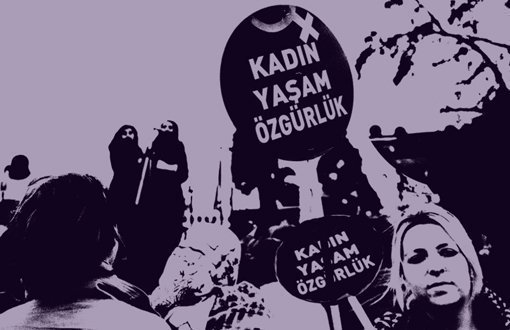Click to read the article in Turkish
According to news reports that bianet compiled from local and national newspapers, news sites and agencies, men killed at least 290 women; 22 girls and 34 men who were near the women or tried to prevent the murder; raped 101 women; harassed 247 women; sexually harassed 367 girls; injured 417 women.
Alongside these murders;
Perpetrators of 14 femicides couldn’t be identified.
10 women and 2 girls were found suspiciously dead, the murders haven’t been clarified.
14 women allegedly committed suicide
One woman who was attempted to get married by force attempted suicide.
Explanation The bianet Male Violence Monitoring Report only covers women who lost their lives as a result of male violence. We do not take include any violence cases or crimes that are not gender-based. Throughout the year, we keep track of unidentified murders and suspicious deaths of women in separate monthly tallies but do not add them to the number presented in the headline. At the end of the year, we examine these cases of unidentified murders and suspicious deaths to determine whether the crimes were gender-based. In time, when we come to the conclusion that a crime is gender-base, we include it in the end-of-year tally. We do not include any murders in the reports that are committed by people with psychological disorders (such as murders committed by people with schizophrenia). We include suicide or suicide attempt incidents in the tally only if the woman was subjected to violence/systematical violence in her past. We cover these suicide incidents in a separate category and do not add suicide cases to the number presented in the headline. In addition, we don't include femicide cases that occur in a mass murder in which the woman was not directly targeted under the condition that the debated incident is not gender based either. For example, following case from June 11, 2017 was not included in our male violence report: * A.K. (27), a rancher in Konya province killed his relatives Bekir Kıran (80/male), Mustafa Tokat (80/male), Meryem Tokat (79/female), Hamit Tokat (51/male) and Mehmet Tokat (64/male) with a barreled-gun. He was caught on the way home after committing the murders. It was reported, that A.K. had schizophrenia and considered the villagers responsible for the death of his father, who had lost his life after a heart attack. The occupational groups mentioned in the report, only cover cases in which the occupations have relevance for the act of violence. * Example: "The expression "x% of the rapists were drivers",imply that the woman was raped by the driver of the (public) transportation vehicle she used. |
Murder
Men killed 290 women, 22 children and 34 men who were near the women at the time of the incident or tried to prevent the murder.
Of the killed women, three were forced to get married at early age; two were trans. Two cis-women were sex workers.
6% of the murdered women were immigrant or refugee.
54% of the women were killed by their partners; 10% by ex-partners; 19% by relatives; 4% by partners of acquaintances.
Firearms were used in 55.5% and sharp obects were used in 29% of the femicides.
5% of the murders were committed despite protective order. 7% of the murdered women had filed a complaint but either protective order wasn't issued or the protective order ended at the date of the murder.
24% of the women were killed for attempting to divorce or break up, or for rejecting the proposal to get married or recommence the relationship. 4% of the women were killed by men whom their daughter/mother/friend attempted to divorce.
19% of the murderers committed or attempted suicide after the murder.
11 murderers had criminal record before the murder. Two murderers received permission from prison administration to get out and then committed murder. Three murderers escaping from prison committed murder.
The cities where femicides occurred are Adana (20), Afyon (3), Ağrı (3), Aksaray (3), Amasya (1), Ankara (5), Antalya (15), Antep (8), Aydın (4), Balıkesir (9), Batman (1), Bolu (3), Burdur (1), Bursa (16), Çorum (1), Denizli (5), Diyarbakır (4), Düzce (2), Edirne (1), Elazığ (2), Eskişehir (2), Giresun (2), Hakkari (1), Hatay (5), Isparta (2), İstanbul (45), İzmir (22), Kars (2), Kastamonu (3), Kayseri (4), Kilis (3), Kocaeli (7), Konya (11), Kütahya (1), Malatya (1), Manisa (8), Maraş (2), Mersin (4), Muğla (4), Muş (4), Ordu (1), Sakarya (3), Samsun (3), Siirt (1), Sinop (1), Sivas (2), Tekirdağ (4), Tokat (4), Trabzon (4), Urfa (11), Uşak (2), Van (3), Yozgat (6), Zonguldak (5).
Child killings
Men killed 22 children with the motivation to harm women on whom they inflicted violence or to take revenge.
53% of the murdered children’s families were at the stage of divorce.
68% of the children were killed by their fathers.
Four of the 18 murders committed suicide, three others attempted suicide.
Mothers of 14 of the 22 children were killed (11 women), mothers of three of them were severely injured.
Before killing of five children, violence inflicted on the children and/or their mothers were filed to official authorities, however no precaution was taken to protect the children and women.
50% of the children were killed with knife.
Rape
101 rape incidents against women were reported in the media in 2017.
11% of the women were blackmailed with rape images or other images taken against their will. 14% of them were usurped following the rape.
30% of the rapists were male strangers and 18% were women’s partners.
15% of rape incidents occurred at homes where women were detained or men broke into, 11% in public places, 6% in workplaces.
13% of the raped women were with disabilities. 10% of them were tourists or immigrants.
12% of the rapists already had criminal record of sexual crimes.
14 of the 113 rape perpetrators had criminal records of sexual crimes.
49% of the rapists were arrested.
The legal proceedings that weren’t covered by the media: 39
Two women killed the rapists. A raped woman committed suicide, her family murdered the rapist. Two women and family of the dead woman were arrested.
Harassment
247 harassment incidents against women were reported in the media in 2017.
22 women were harassed on public transport or taxi. Five women were assaulted on the pretext of the way they were dressed.
65% of the harassers were male strangers, 12.5% were men from women's business life.
18% of the women were subjected to peeping and/or their images were taken against their will. 11% were subjected to exhibitionism; 9% to digital harassment.
7% of the harassers had previously criminal records of sexual crimes (17 harassers). Only 16% of the harassers were arrested.
Husband of a woman killed a harasser who secretly entered their home and then was arrested. His wife who was harassed was released on probation.
2 women who injured harassers on self-defense were detained.
Child abuse
Men sexually abused at least 376 girls in 2017. 19 girls got pregnant as result of rape.
31% of the girls were abused by school staff; 12% by teachers; 7% by relatives.
40% of the child abuse incidents occurred at schools, near schools and on shuttles; 5.5% at parks.
8.5% of the child abuse incidents were revealed by teachers.
12% of the girls who were sexually abused were with disabilities.
Violence-injury
Men inflicted violence on at least 417 women in 2017. 22.5% of the women were severely injured.
17 of the 417 women were trans.
48% of the women were subjected violence by their partners; 10% by male relatives; 10% by ex-partners.
32% of the violence-injury incident occurred at public places in front of people.
Other than battering or injuring with gun, men resorted to methods such as throwing chemical matter on woman's face, torturing, setting car on fire while the woman is inside.
5% of violence-injury incidents occurred despite protective orders.
13% of the women were subjected to violence for attempting to divorce or break up, or rejecting the proposal to get married/recommence the relationship/commence a relationship.
Four of the women who were subjected to violence were forced to get married at an early age.
A man getting out of prison on permisson tortured his wife. Another man escaped from prison and assaulted his wife who filed a divorce case.
Only 11% of the assailants were arrested. At least six of 397 assailants had criminal records of murder, sexual assault, injuring in the past.
12 men were killed by women on whom they inflicted violence or women’s son, one was injured. In these incidents, seven women and two men were arrested. One woman was released on probation, one trans woman was sued. Legal proceedings about three incidents in which women exercised their right to self defense weren’t reported in the media.
* bianet will cover only femicide cases’ distribution by cities since 2016 in the annual male violence monitoring report. Sexual and physical violence cases constitute only peak of the iceberg. Millions of women are subjected to harassment, various sexual and physical violence forms in Turkey everyday. We know that many married women are subjected to domestic rape everyday. However, these violence cases, which are inured in society and turned into an element of “embarassment” for women, are mostly not recorded. When women inform law enforcers of what they go through or take legal steps, they are subjected to trauma over and over. Rapists, harassers, men inflicting violence lodge libel suits against the women who file a complaint against them. Even though all femicides are not reported in the media, femicides are newsworthy for particularly local newspapers, so most of the femicides are covered by the media. We can report the cases, which managed to “qualify as news” in the bianet tally. |
(ÇT/TK)





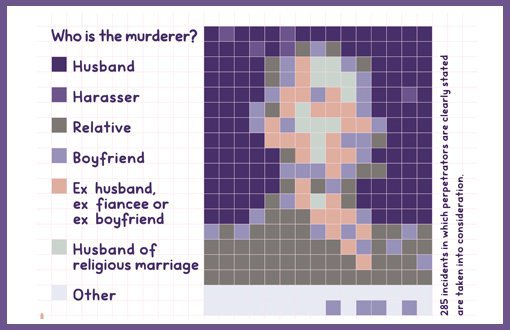

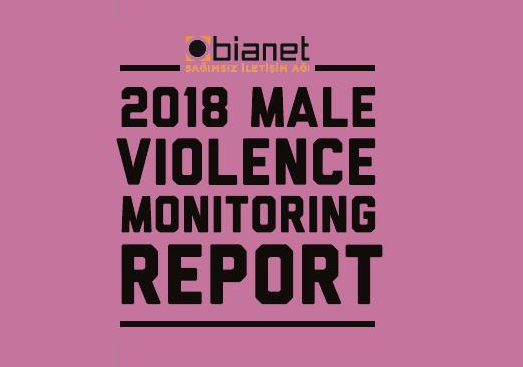
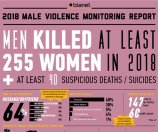
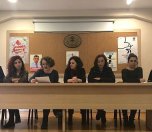
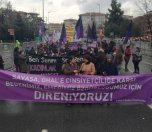
.jpg)



